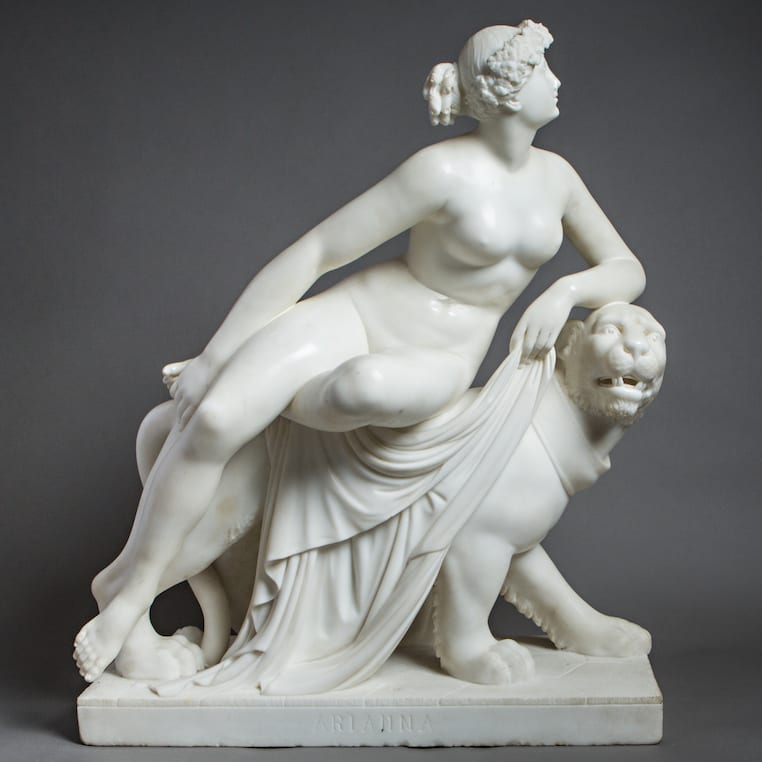Marble Sculpture of Ariadne Seated on a Panther, 19th Century CE
Marble
64.1 x 76.8 x 34.3 cm
25 1/4 x 30 1/4 x 13 1/2 in
25 1/4 x 30 1/4 x 13 1/2 in
X.0517
Ariadne was originally a Greek fertility goddess whose cult was established in Crete. Her name is composed of two Cretan Greek word meaning, “utterly sacred.” In later traditions Ariadne’s divine...
Ariadne was originally a Greek fertility goddess whose cult was established in Crete. Her name is composed of two Cretan Greek word meaning, “utterly sacred.” In later traditions Ariadne’s divine origins were repressed and she became increasingly known as the daughter of the legendary King Minos of Crete who had invaded and conquered Athens after his son was killed there. The Athenians were required to pay the price of his life by sacrificing seven young men and seven maidens each year to the Minotaur, a dreaded bull-headed giant that inhabited the center of the great labyrinth. One year, the group of young people sent to Crete from Athens included Theseus, son of the king of Athens, who volunteered himself to join and kill the Minotaur. Ariadne upon seen Theseus immediately fell in love with him and gave him a magic sword to kill the beast and a ball of thread so that he could retrace his footsteps out of the maze of the labyrinth. After Theseus killed the Minotaur, he ran away with Ariadne but according to the most common mythological account, he abandoned her on the island of Naxos while she was asleep. When Ariadne woke up from her slumber she met the god Dionysus, whom she married. It is this context that our sculpture reflects.
The marble sculpture depicts Ariadne being carried upon the back of a collared panther in a wedding procession. Presumably, she is on her way to meet Dionysus for the marriage ceremony. This composition is based upon the Clasical Revival masterpiece carved by Johann Heinrich Dannecker (born 1758, died 1841). Ariadne is represented nude, save for the crown of grape leaves that adorns her head, symbolizing her relationship with the god of wine. This particular work was likely produced in the years following the death of Dannecker, when this composition had become vastly popular.
The marble sculpture depicts Ariadne being carried upon the back of a collared panther in a wedding procession. Presumably, she is on her way to meet Dionysus for the marriage ceremony. This composition is based upon the Clasical Revival masterpiece carved by Johann Heinrich Dannecker (born 1758, died 1841). Ariadne is represented nude, save for the crown of grape leaves that adorns her head, symbolizing her relationship with the god of wine. This particular work was likely produced in the years following the death of Dannecker, when this composition had become vastly popular.
